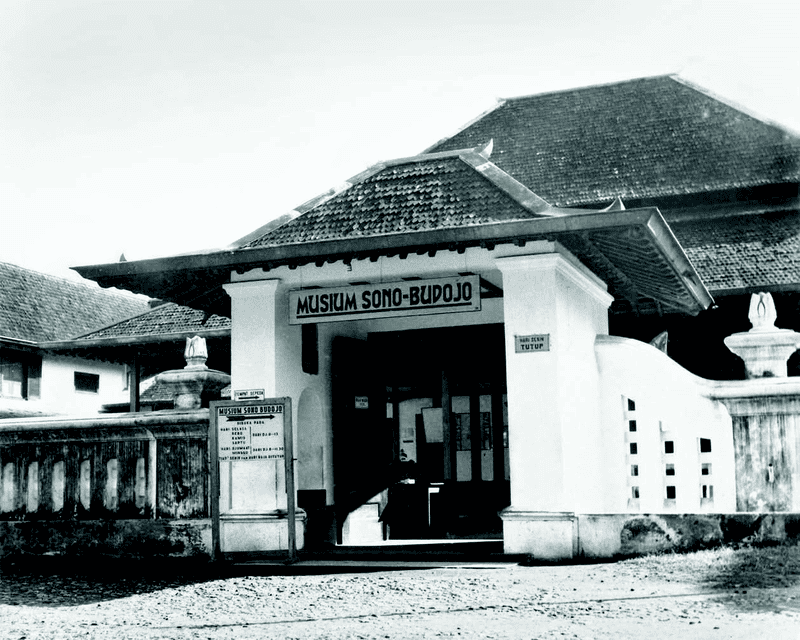History
Sonobudoyo Museum was a foundation engaged in the culture of Java, Madura, Bali and Lombok. This foundation was founded in Surakarta in 1919 named Java Instituut. In the decision of the Congress in 1924, the Java Instituut would establish a museum in Yogyakarta. In 1929 the collection of cultural data from the regions of Java, Madura, Bali and Lombok. The Museum Establishment Planning Committee was formed in 1931 with members including: Ir.Th. Karsten P.H.W. Sitsen, Koeperberg.
The museum building uses the former "Shouten" land, a gift from Sri Sultan Hamengkubuwono VIII and marked by the candrasengkala fragment "Buta ngrasa estining lata", namely 1865 Java or 1934 AD. While the inauguration was carried out by Sri Sultan Hamengkubuwana VIII on Wednesday wage on the 9th of Ruwah 1866 Java marked by the sengkala candra "Kayu Winayang Ing Brahmana Budha" which means the year of Java or precisely on 6 November 1935 AD. During the Japanese occupation, the Sonobudoyo Museum was managed by the Regent Paniradyapati Wiyata Praja (Social Office for teaching). In the era of independence, it was managed by the Regent of Utorodyopati Budaya Prawito, namely the ranks of the Yogyakarta Special Region government.
Subsequently at the end of 1974 the Sonobudoyo Museum was handed over to the Central Government / Ministry of Education and Culture and was directly responsible to the Directorate General with the enactment of Law No. 22 of 2000 regarding the authority of the Government and the authority of the Province as Regional Autonomy. Sonobudoyo Museum, starting in January 2001, joined the Yogyakarta Provincial Culture and Tourism Office to become UPTD Perda No. 7 / Th. 2002 Date. August 3, 2002 concerning the formation and organization of the UPTD at the Regional Office within the Provincial Government of the Special Region of Yogyakarta, and the Governor's Decree No. 161 / Th. 2002 Date. 4 November regarding TU - Poksi.
This Sonobudoyo State Museum has 10 types of collections:
1. Types of Geologic Collections
2. Types of Biological Collections
3. Ethnographic Collection Types
4. Archaeological Coection Type
5. Types of Numismatics / Heraldic Collections
6. Types of Historical Collections
7. Types of Philological Collections
8. Types of Keramological Coection
9. Types of Art Collections
10. Types of Technological Collections
